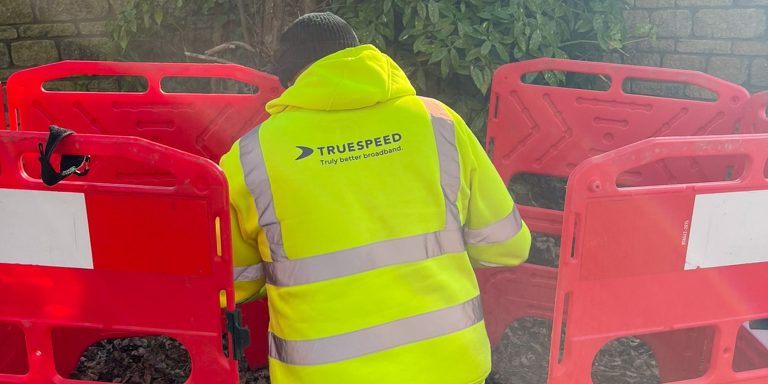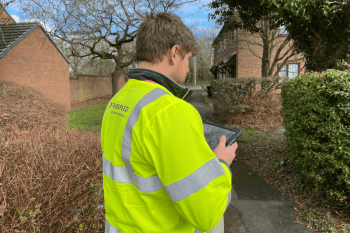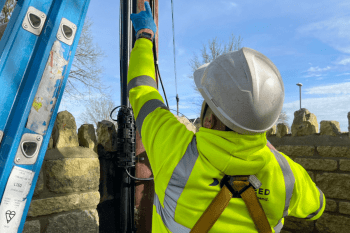General access
Everything you need to know about why we may need to access your property, how you can agree access, wayleave issues (and what they might mean for you), as well as information on flying wires, tree cutting, and more.
If you’re looking for information about apartment buildings or new developments, click below.

Why do you need to access my property?
While we’re installing our brand-new, full-fibre network into your community, we always aim to keep disruption to a minimum. That’s why lay our new cables using existing infrastructure, such as poles and underground ducts, wherever possible and practical.
In some areas, these poles and access chambers to the ducts can be found in the public road or footpaths. In other areas, they may sit just inside front gardens, driveways, or even fields, which is why we need to access private property to reach them.
How do I agree access?
If you would like to agree or discuss our access request, please don’t hesitate to let us know. To do so, you can always reply to the team member who contacted you or email us at networkaccess@truespeed.d.fanaticdev.co.uk. Or, you can fill in the form on this page. To agree access, we’ll need to send you a one-page access form for you to sign and send back to us.
Will my neighbours know I’ve been approached to agree access?
Access is only ever negotiated between us and you. If we’re struggling to contact anyone at the address, we may ask a neighbour to enquire about the best time of the week for us to speak to you at your property, or to ask them to pass on our contact details – though we would only ever do so in order to make contact with you.
When properties cannot be installed because an access could not be resolved, our Customer Care team will only tell affected customers that “we have been unable to agree access”. We will never have a conversation regarding who refused access or why. However, we have a responsibility to explain to other residents why we aren’t able to provide them with that service when they sign up.

Have Openreach / the power company agreed to you accessing the pole?
Yes, we lay our brand-new full-fibre using existing underground ducting through our Physical Infrastructure Agreement with Openreach. We also have a pole-sharing agreement with National Grid, so long as we also make arrangements with the legal land or building owner to enter their land/building.
What is “tree cutting”, and why does Truespeed need to do this?
“Tree cutting” really means tree “pruning”. This is necessary when the canopy of the tree(s) has grown into the overhead lines, which isn’t safe. As a result, we’re asking for permission to prune an open channel into the tree canopy around the cables, and remove any dead or diseased branches above to prevent them from falling onto the line in strong weather. We may also ask to clear ivy from poles on your land; this would also be for safety reasons.
If you would like to report or give permission for us to make safe any Truespeed poles or overhead lines on your property, please email us at networkaccess@truespeed.d.fanaticdev.co.uk, or fill in the form on this page.
I was told there’s a “wayleave” issue. What does that mean?
This means that part of the network apparatus we are installing to reach your property (usually a pole or chamber) is located on, or over, private land. As a result, we need to arrange access with the landowner to complete the route.
How long does it take to get access?
Confirming access can take anything from a few hours to several weeks, depending on a number of factors, such as: the simplicity of the access required; what apparatus we are accessing; our ability to locate the legal landowner; and how quickly the landowner engages with us.
We always try to solve any issues and arrange access as quickly as possible. If you think you might be able to help us, please contact us at networkaccess@truespeed.d.fanaticdev.co.uk, or fill in the form on this page.

